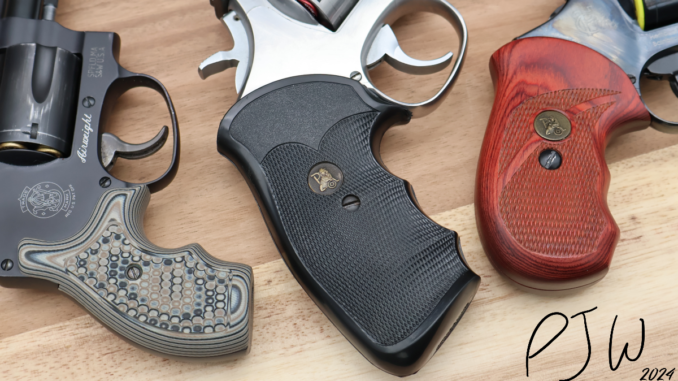
We’re really big fans of the double action revolver here at Primer Peak. Between Dan, myself, and our other writers, we’ve probably got close to three dozen revolvers. While we really enjoy shooting them, we’ve generally got to do some kind of modifications on them to make them work for us. The biggest one is swapping the grips. Grips can really make or break the shooting characteristics for a gun, and a bad set can ruin an otherwise good revolver. What qualities and features should we look for in a good revolver grip? How about the materials that the grips are made of?
Setting the Stage
The scope of this article is strictly pertaining to setting up the DA revolver for self defense purposes, against humans. I’ve also got a focus on concealed carry, both within the waistband, and in the pockets. This is not meant to encompass handgun hunting, giant magnum guns, or old cowboy SAA clones.
My experience is primarily with S&W revolvers, but I’ve also got a lot of time with Taurus, Rossi, and Ruger guns. I’ve shot Colts a fair bit in the past, but that’s all from a long while ago. I mention brands, as some brands are harder to get good grips for, and you may not be able to get the same style when going from brand to brand.

Due to the differences in how grips attach to guns, some designs/styles just do not exist for that specific gun. If you want something really thin for an LCR, it just ain’t gonna happen because of how the grips attach to the gun. For small frame guns, the S&W-pattern guns (J-frame, Taurus 85/856 lines) have the most availability for aftermarket grips, with Ruger and Colt trailing behind.
Regardless of brand, there are features that you’ll want for the grips on your defensive revolver. What are they?
Grip Features
There’s a lot of personal preference when selecting grips for your revolver. That being said, I’m going to outline qualities and features that I’ve found to generally be good for improving feel & shootability of the DA revolver. I’ll be discussing concealment too, and how some grips do better than others.
Quality #1 – Filling the Sinus
For me, (and most of the shooters that I’ve seen), the biggest thing that we need our grips to do is to fill in the sinus. The sinus is the spot in between the back of the trigger guard, and the front of the frame tang. Classic revolver grips generally did not fill this gap, which leads to generally poor DA shooting performance.

So why did old DA/SA revolvers have these grips? Well, it goes back to training. Cops, agents, and soldiers were not trained to actually shoot the guns in DA. These old grips give you good leverage on the hammer to cock it, but are pretty poor for leverage on the trigger for DA shooting. By the time that DA shooting was becoming the norm (1950s-1960s), bigger grips started to come into vogue.

In the olden days, companies would make little adapters that wedged onto the frame, under your smaller grips. These grip adapters would fill in the sinus, and allow for better trigger reach when doing DA shooting. Now, we can just get grips that do this, but the adapters still exist if you wanted to go this route.
Finding grips that fill the sinus is the most important thing (for me) to make a DA revolver more shootable. However, it’s not the only quality.
Quality #2 – Grip Size
Grip size is extremely important. If we are carrying this revolver, we need it to conceal. If it’s a bedside gun, it’s less important, but if we’re carrying the thing every day, it really matters. The size of the grips also impact how we grip the gun, and play a big part in the overall shootability.
The two big measurements for grips are the width (side to side), and the length (front to back). Vertical height plays a part too, but to a lesser extent.
The length is more important for concealment and shootability. Obviously we want length in front of the grip, to fill in the sinus. The question them comes up; How much length do we want on the back of the gun? Well, it’s one part preference, and one part firearm selection.
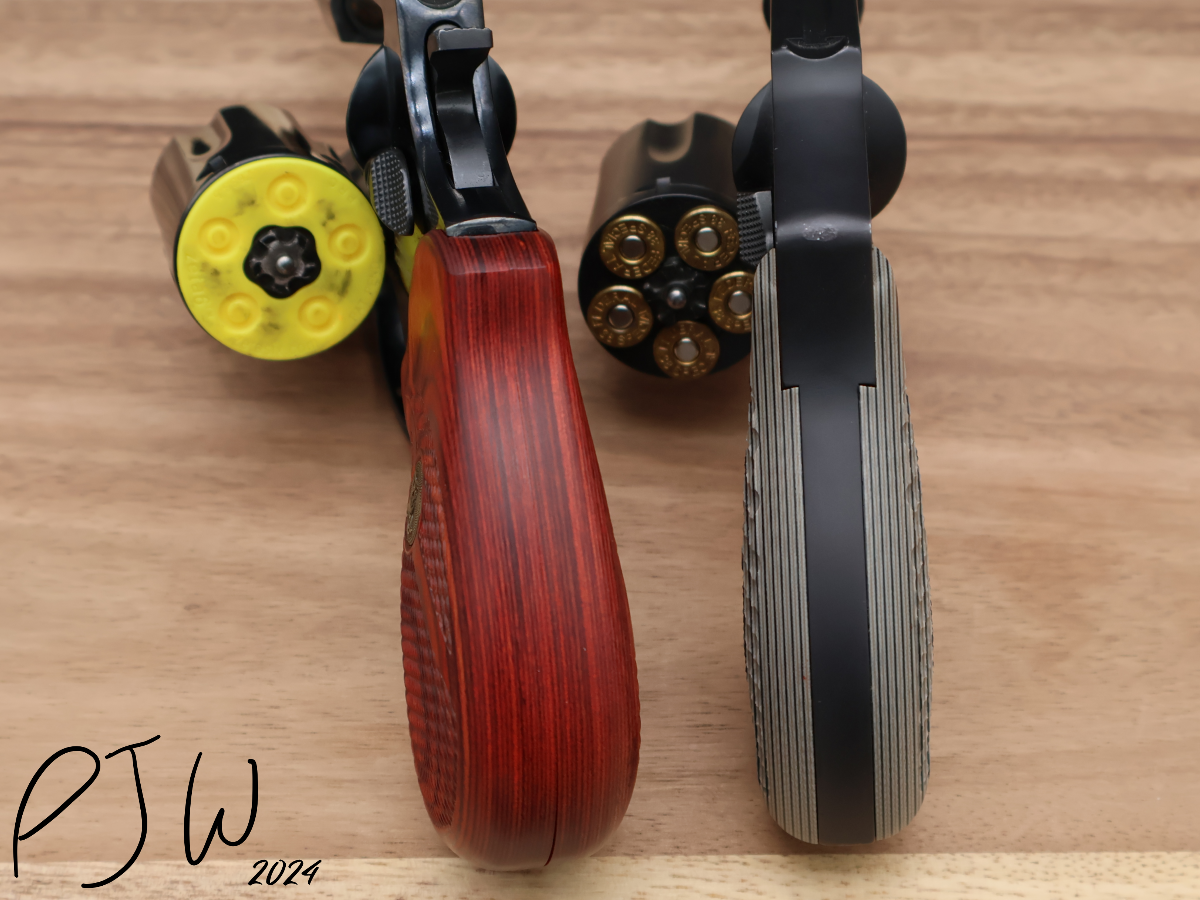
I personally do not like a lot of extra length past the rear tang of the gun. However, some guns can only mount new grips that way. The Ruger LCR is a common revolver that can only use grips that fully surround the entire tang of the gun. Common grips for the Taurus 85/856 are like this too, albeit that those guns can use smaller grips with their design. For me, having the rear tang of the gun exposed is what I prefer. Less length past the tang means better concealment, and I’m still getting a comfortable and stable grip on the gun.
Width is much more personal preference & hand size related. You’ll see plenty of grips with palm swells and extra width. These don’t tend to impact concealment too much (as the cylinder will still be wider than the grips), but they can assist in making the gun more shootable. I like medium thickness grips.
Height impacts concealment and use of speedloaders. If the grips are too tall and wide at the top, they can impact the path of a speedloader, and even some speed strips. We can modify the grips to clear a loader, but it’s still a pain. Obviously, if we make the grips taller and they protrude far past the bottom of the frame, that will hurt concealment. Unless you’ve got really large hands, I’d recommend avoiding massively tall grips on your revolver.
With grip size, it really is about finding the sweet spot that works for you, and for your specific use case.
Quality #3 – Texture
The key to shooting a revolver well (especially a small one) is a solid grip (technique) on the gun. I think that having grippy texture on the gun makes this an easier goal to achieve.
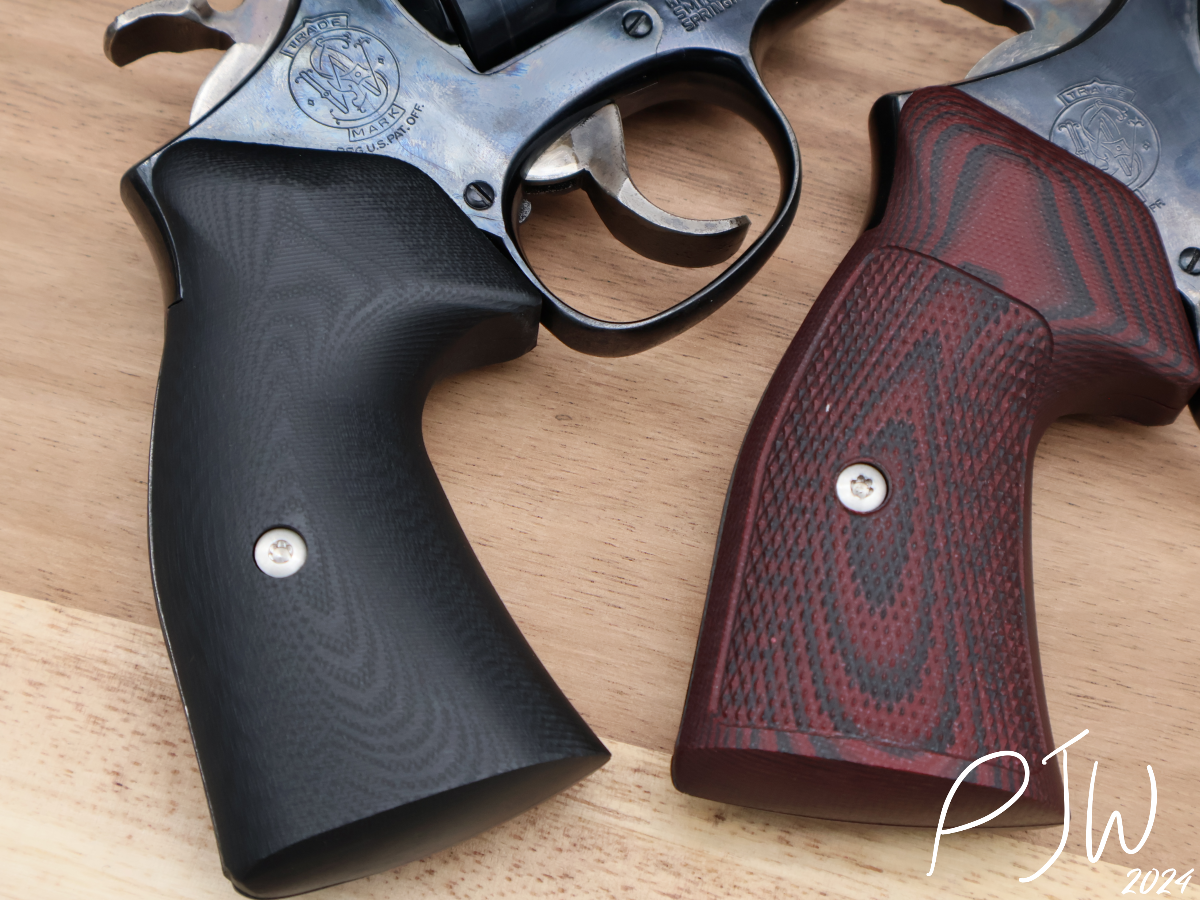
There are many ways to get more grippy texture on your revolver. There are checkered and serrated grips out there, and sometimes the material itself can provide grip. I’ll touch on it in the “materials” section, but rubber is generally the grippiest material, even without extra texture molded into the grips. In cases where we are happy with the current grip on the gun aside from lacking texture, we can wrap hockey tape, or something similar around those grips to add texture. Heck, I’ve seen some folks carve patterns into grips to gain more texture, but I wouldn’t generally recommend that.

How much texture do you need? Well, I think that falls under personal preference. I like a lot of texture, and generally for it to be pretty aggressive. I’ve also got fairly hard hands, and I know what I like would tear up a lot of folk’s palms. Hey, that leads right into…
Quality #4 – Personal Preference
Personal preference. I wanted to include this section, as there are quite a few elements that I think fall under personal preference. I view these as things that are not necessarily wholly practically minded, and are up to you to choose.
- Finger Grooves: Some people like them, some hate them, and some are indifferent.
- Amount of Texture: We can all agree that we need some texture, but to how much is determined by you.
- Grip Material: While the practical side should win out, we are creatures that like pretty things.
There’s more things out there that fall under personal preference, but these are what I generally think of. Since I mentioned materials, what are the common ones, and what differences do they practically make?
Materials
If you can think of it, someone has probably slapped it onto a revolver or 1911 to use as grips. Now, I’m only covering the four big materials used for grips, but there are a few that I’m purposefully missing.
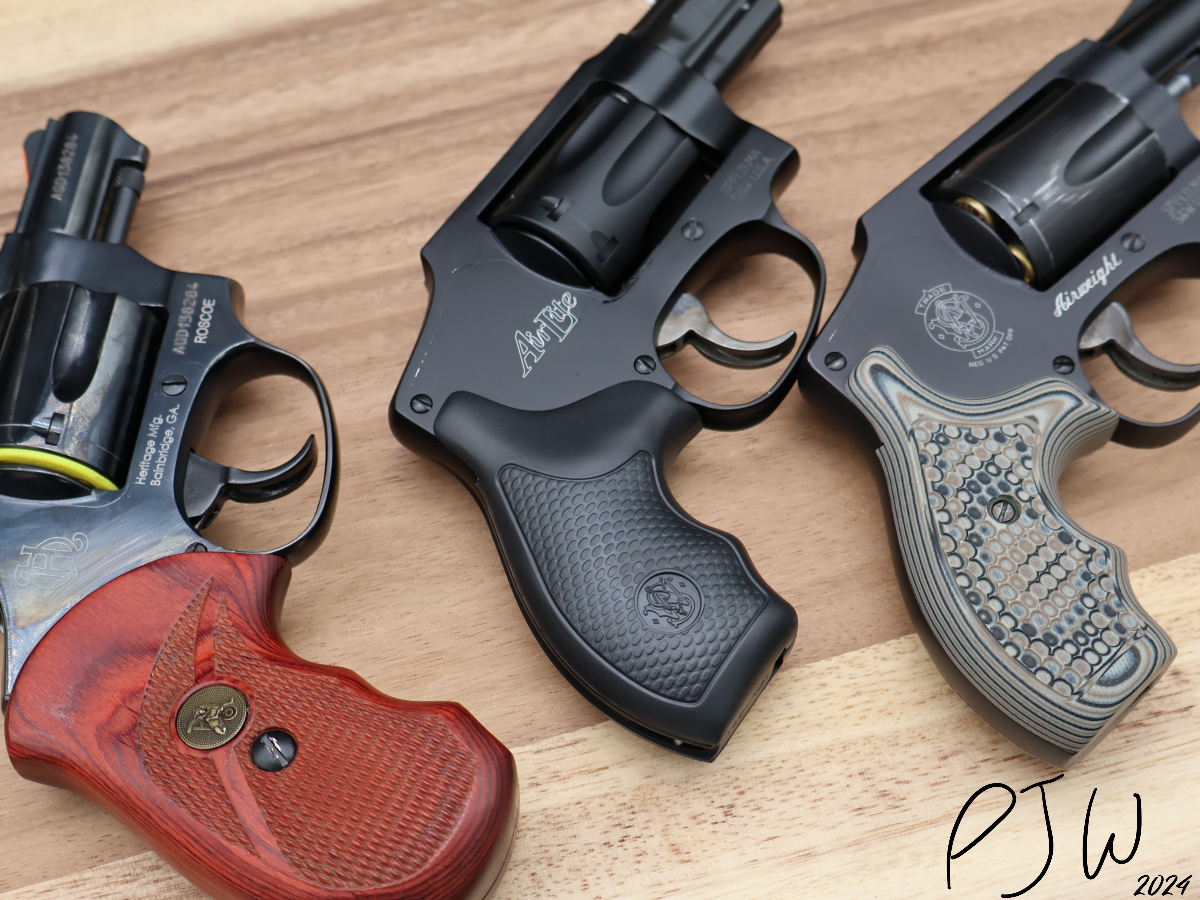
The four big ones are wood, rubber, G-10 fiberglass, and plastic. You’ll see grips made by the big companies using these materials, and they all have upsides and downsides. I’ve used them all, and have them currently on my revolvers.
Now, what are the materials that I’m not covering in strong detail? Well, I’ll be avoiding metal and bone grips. Metal grips aren’t super common (more of a thing on autoloaders), but they generally do not provide much to a revolver. They’re expensive, and generally pretty heavy. With bone & ivory, they’re expensive, lack any texture, and can be quite fragile. As such, I’ll not be listing them down below.
While I’m covering materials, the qualities that I listed above are still in play. All of the materials that I’m about to list can have those good qualities, but with everything in gear selection, you’ve got to find the right thing for you.
We’ll be starting with most common, to least common for grip material.
Wood
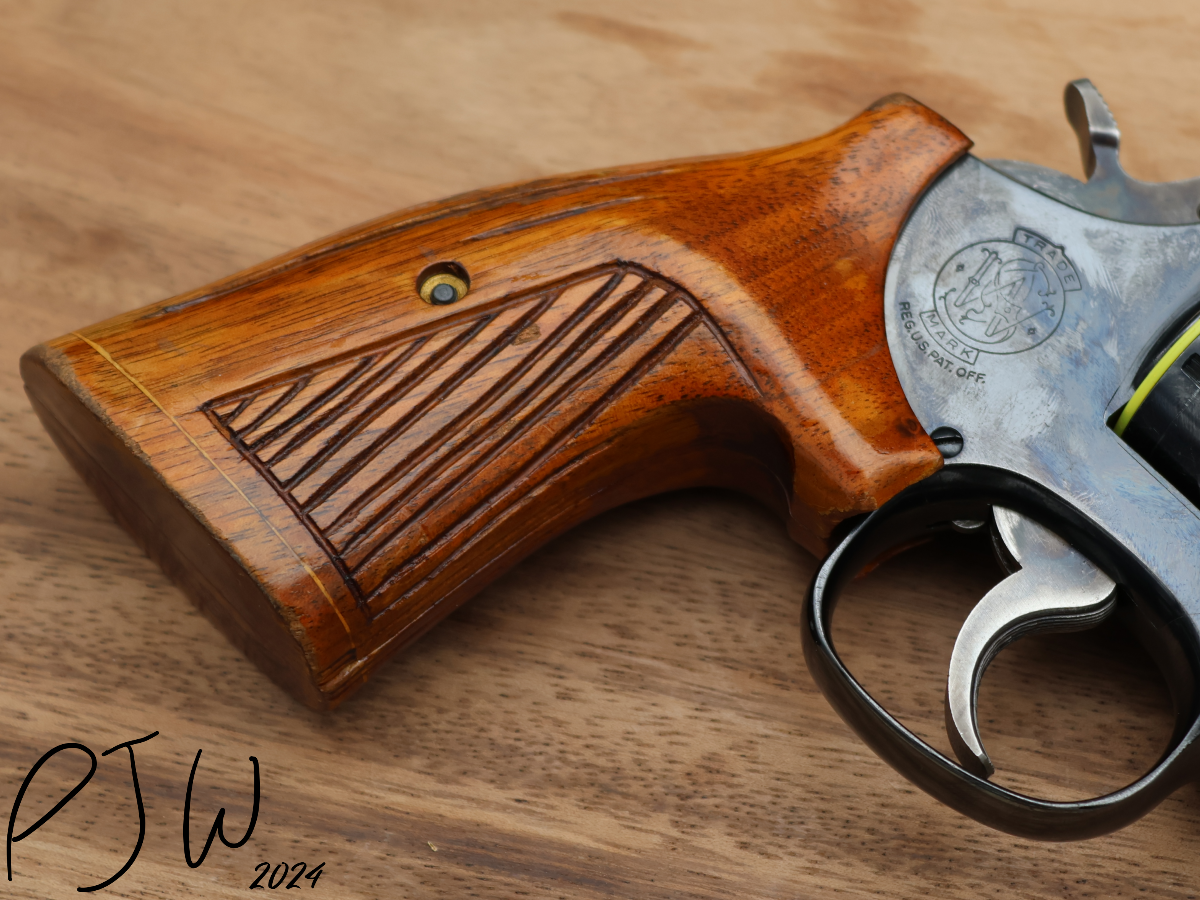
Wood grips are historically the most common ones that you’d see on a revolver. They come in all shapes and sizes, and are made from a myriad of types of wood. You’ll most commonly see walnut and rose wood, but I’ve seen plenty of variety in the grips over the years.
I think for most folks, wood is the generally the place that they start with on revolvers. However, wood does have some inherent issues. Generally speaking, they are not incredibly durable, requiring more maintenance to keep them functioning. Water and oil like to seep into un-varnished wood, and it’s pretty easy to get dings, dents, and cracks over time. If maintained, they’ll last well, but you’ll need to put more care into them if you want them to do so.
Due to the nature of wood, it is not really inherently grippy. If you have varnished grips to keep the wood moisture resistant, you are really gonna need something extra to get some grip. This is where you’ll start to see checkering and patterns cut into the grips. You can certainly get some grippy wood, but a lot of the offerings out there are lacking in it. In addition to that, the hardness of wood generally means that the material itself won’t be doing much to absorb and reduce recoil.
I’m not the biggest fan of wood on revolvers. It’s sacrilege to my friends, but I’d rather have a grippy material on my revolvers. That being said, I’ve certainly held some wood that felt great in the hands (hehe). It’s not my go-to however.
Rubber
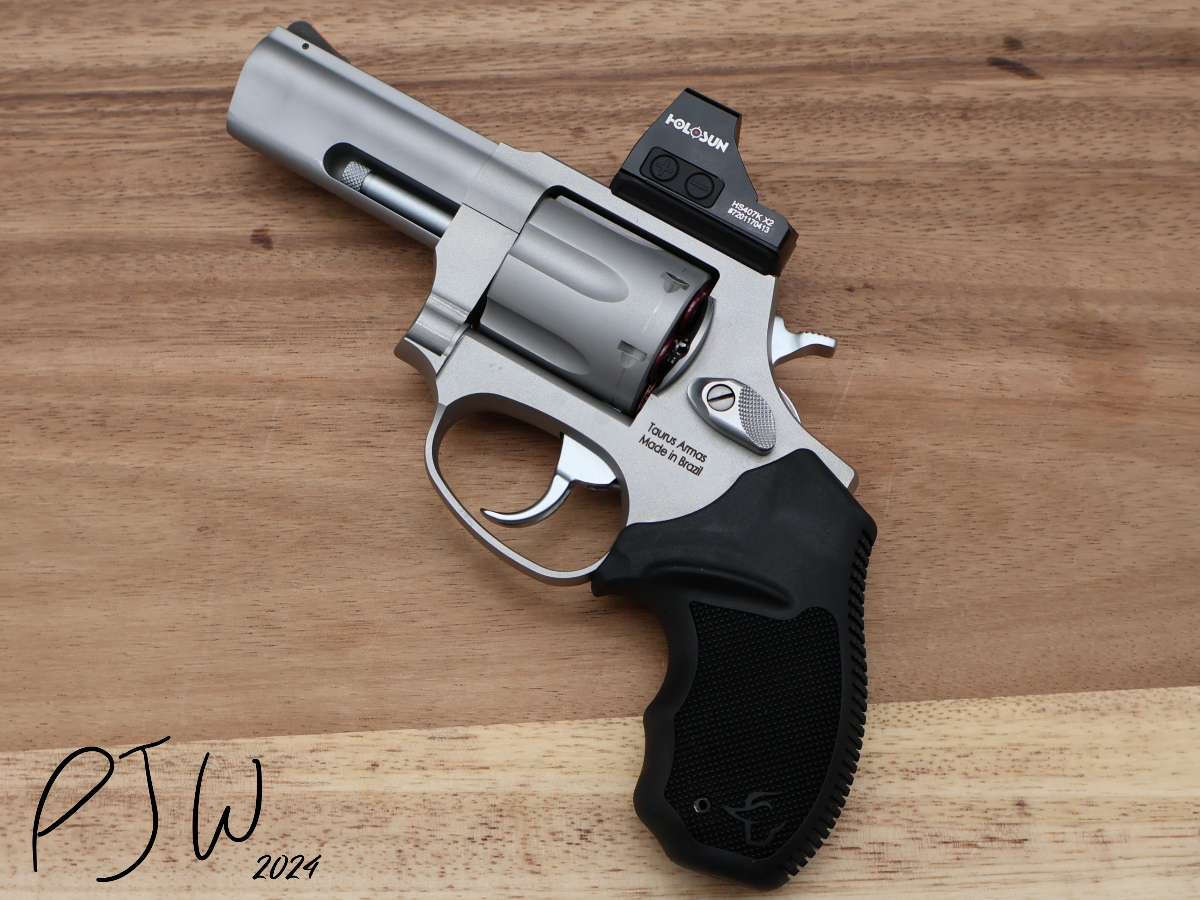
Rubber grips are (in my opinion), the most common grips shipped on guns these days. S&W, Ruger, and Taurus are primarily selling new guns with rubber grips. Much like wood, you’ve got a ton of options out there, from smaller grips, up to massive ones. Also like wood, the quality is all over the place.
Rubber is resistant to water and moisture, and due to the nature of the material, is inherently grippy. The texture of the material does vary, with some companies doing very grippy rubber, and some that do it a less aggressively. Factor in a pattern on top of the material, and you can get a grip that really locks the hand onto the gun. With the soft & semi-soft nature of rubber, it can help to absorb a little bit of recoil too.
Rubber is not without some downsides. The biggest one is that it can often be too grippy. When needing to draw the gun from IWB/AIWB or a pocket, some rubber grips can grab clothing, making the draw harder, and slower. As such, we need to choose a rubber grip that is the “Goldilocks” of grippiness, not too much, and not too little.
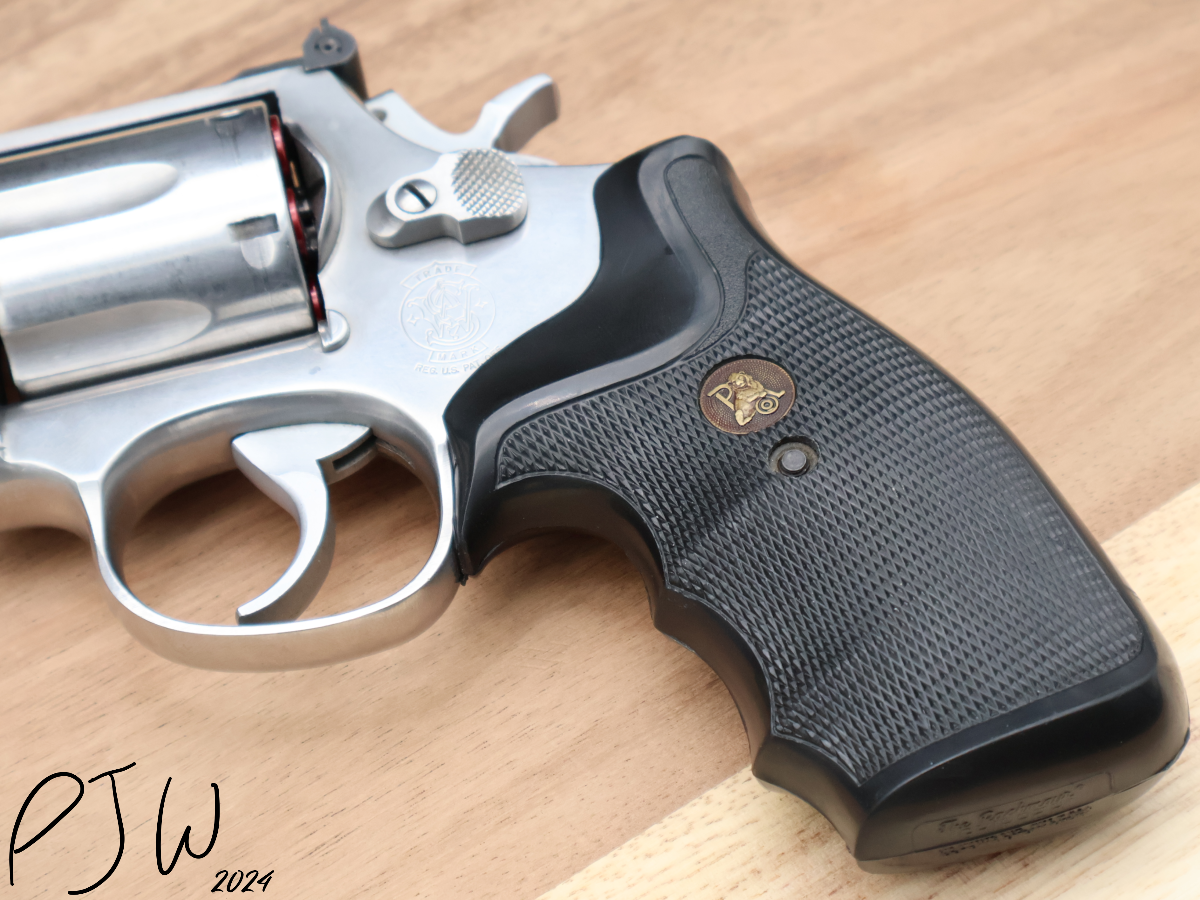
With rubber, there’s a tendency to get nasty over time. Our dead skin cells will be left behind in any firearm’s grip, but with rubber, it gets pretty gunked up, and tends to stay. This means maintenance, but it’s as simple as keeping them clean-ish. I use a rag with some light mineral spirits on it to keep my rubber grips clean.
I used to hate rubber grips, but that was until I found ones that I like. It’s all about getting the “Goldilocks” when it comes to finding the right grip, and with rubber, it took me longer.
G-10

G-10 is a composite material, being made from layers of compressed laminate fiberglass. It’s a material that’s been in use for decades for knife handles and scales, and for grips on guns. It is my favorite material for revolver grips.
Well, why is that? It’s because it does everything that I like. It’s low maintenance, and is extremely durable and moisture resistant. The material itself is also generally inherently grippy (as long as the manufacturer hasn’t applied a slick coating to it). It also takes quite well to checkering and patterns to create texture, which I love. Even with un-checkered G-10, we still get pretty good grip. Much like wood, G-10 is hard, so it won’t be able to assist in soaking up recoil like rubber can.
Due to the nature of G-10, it comes in quite a variety of colors too. I like solid colors, or a mix of two. Black, black and red, white and black, and green and black are what I have on my guns right now.
So where’s the downside? Well, there’s two of them, and they’re pretty intertwined. It is cost to purchase, and availability. G-10 for revolvers is prominently made by VZ Grips and Hogue, and both are quite popular. As such, it can be hard to find specific grips in stock. The cost is relatively high too, with grips generally starting off around $65, and going up from there. More expensive than rubber and plastic, and generally more expensive than wood (albeit that you can certainly pay a premium for nice wood grips).
I love G-10, and recommend it pretty often. Some folks think that I’m a heathen for putting it on most of my guns, but I’m fine with that. What’s the last material?
Plastic

While more common than bone, ivory, and metal, plastic grips are certainly less common than wood, rubber, and G-10. However, they have a lot of upsides.
Plastic is durable, moisture proofed, and generally pretty inexpensive. It can be made to have an aggressive texture pattern pretty easily, albeit that most of the un-patterned part of a plastic grip will be slick. Plastic is plastic, you know it, and I know it.
So what are the downsides? Well, I’ve already mentioned that it can be slick in the un-patterned spots. It’s also hard, and as such, is like wood and G-10 in not inherently absorbing recoil well. Another big downside is availability. Or rather, the lack of it. At time of writing, I can only think of two companies making plastic grips for revolvers. Bill Rogers (inventor of kydex on holsters, the shot timer, and the Rogers Shooting School) makes a plastic LCR grip (pictured above), and Pachmayr makes a plastic grip with a pop-out pinky extension (reviewed by Dan in 2019).
Why mention them? Well, with the advent of 3D printing, you’ll be seeing a lot more plastic revolver grips. Hamre Forge is selling 3D printed plastic grips (nylon filled and fused together, but 3D printed plastic nevertheless), and they’re just the first one that comes to mind.
The Verdict
There’s a lot that goes into picking the right revolver grips. My guide is the process in which I go through picking out grips, and I’ve seen it work well for friends in the past. Good grips can make a revolver, and bad ones can certainly ruin them too. At the end of the day, you’ve gotta go out and try them out for yourself. Your hands are gonna want a specific fitment to really work on the revolver.
Further Reading, & Patreon Link
Thanks for reading the article! If you want more tips for setting up your revolver for carry, check out some of Dan’s articles on the topic!
- Setting Up Your Revolver EDC [2024]
- How to Carry a Speed Loader IWB | Revolver Reloads
- “Revolvers Never Jam”, or Thoughts on Revolver Reliability
- Wadcutters for the Defensive Revolver
Hey there! Here are some of our reviews of carry revolvers:
- Ruger LCR 22 Review – Sub Caliber Supremacy
- S&W 442 Review – A (Situationally) Great Classic
- Taurus Defender 856 TORO Revolver Review [2023]
- Taurus 327 Defender TORO Review [2024]
If you’d like to support me on Patreon, I’ve got the link for that here. Nearly everything that I do on Primer Peak is paid for out of my own pocket, and my content is not shilled or driven by manufacturers or companies. If you decide to donate, I’d really appreciate it, as it would allow for me to continue to bring you quality work.


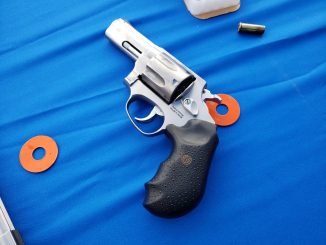


Very good and based article.